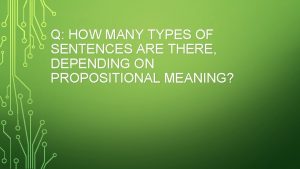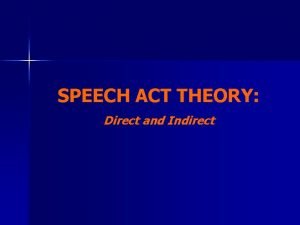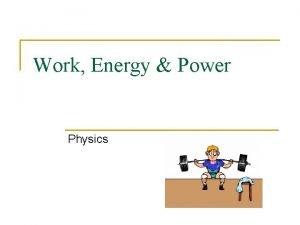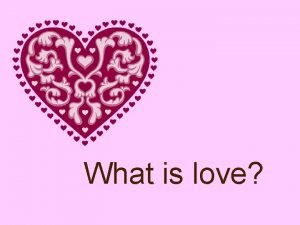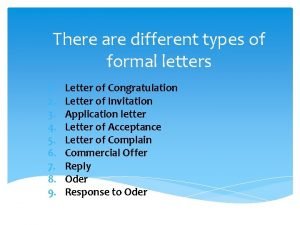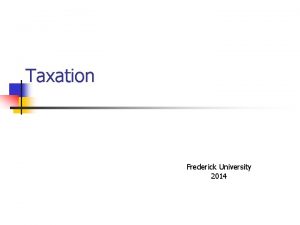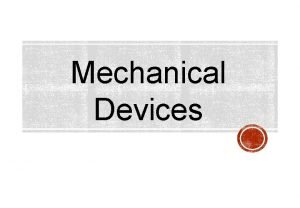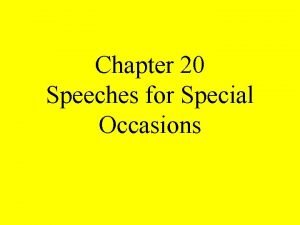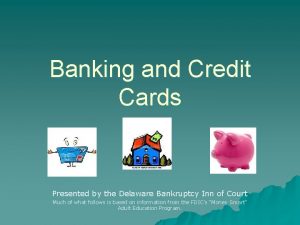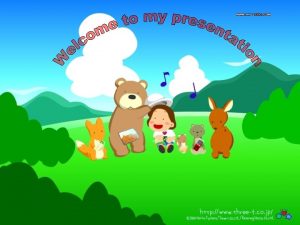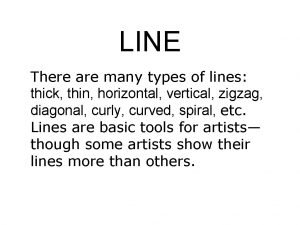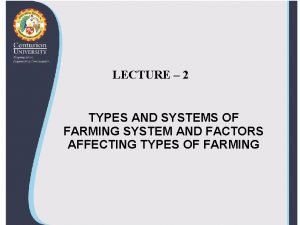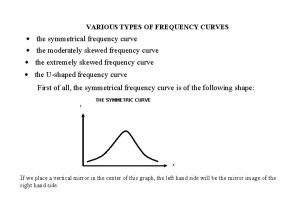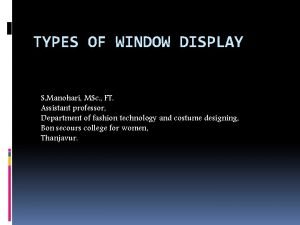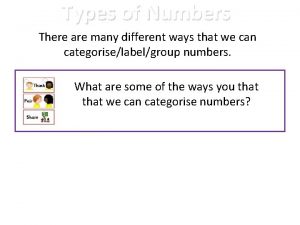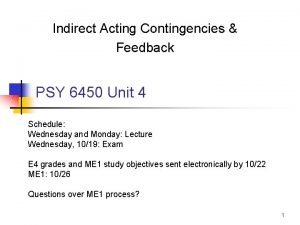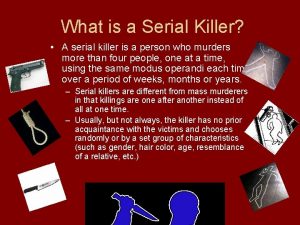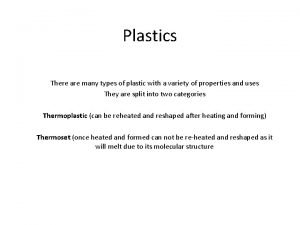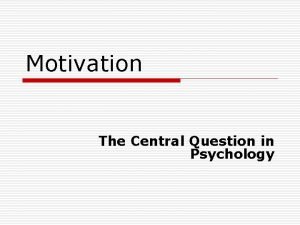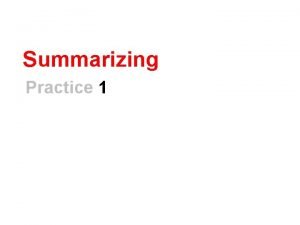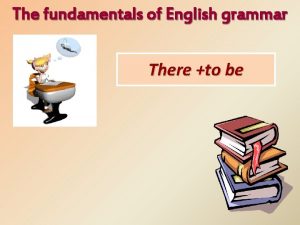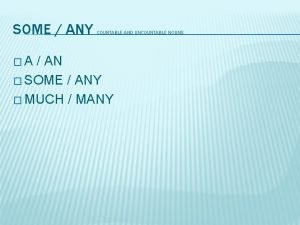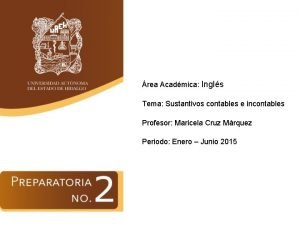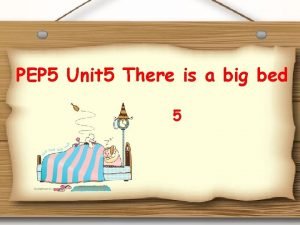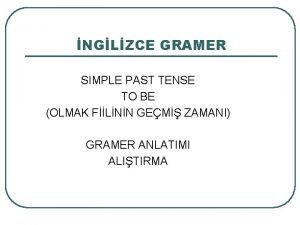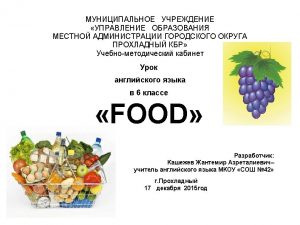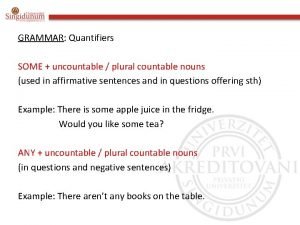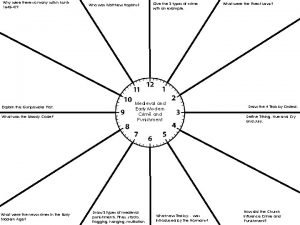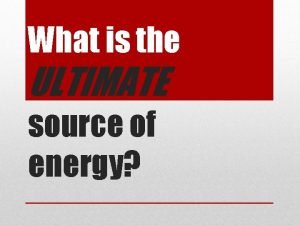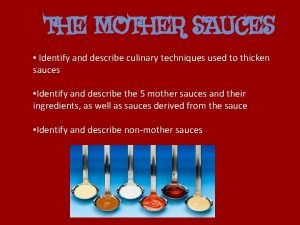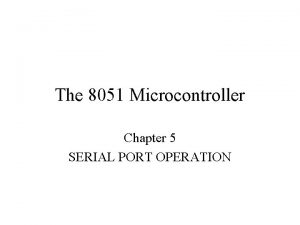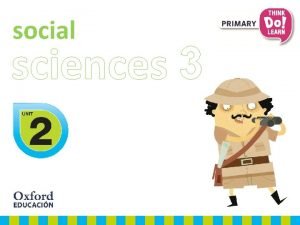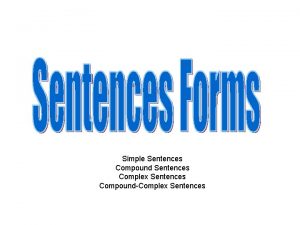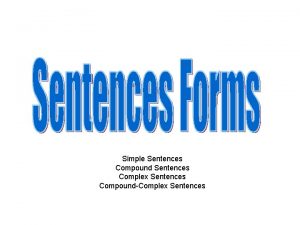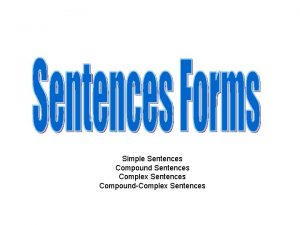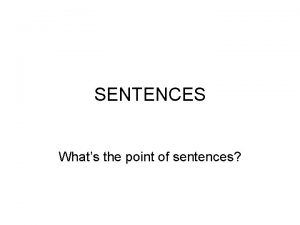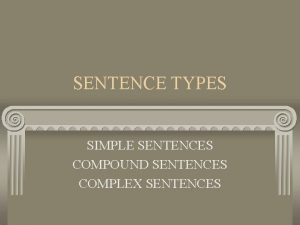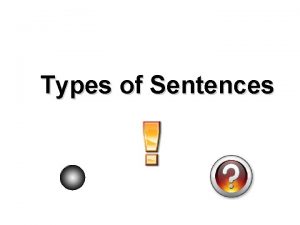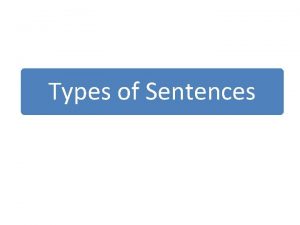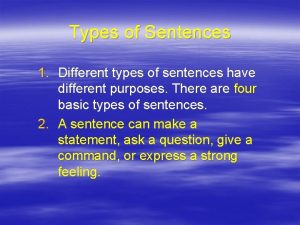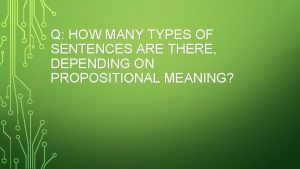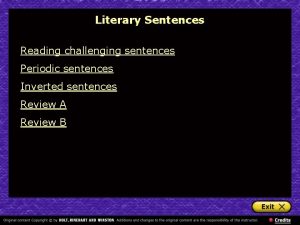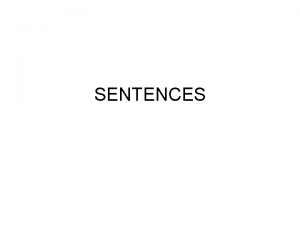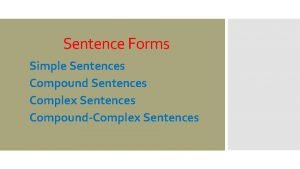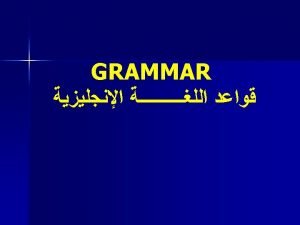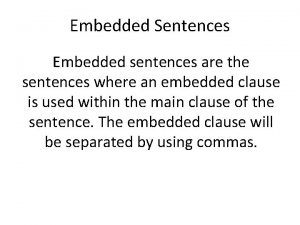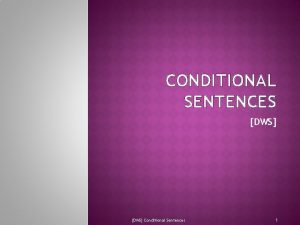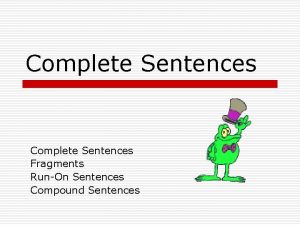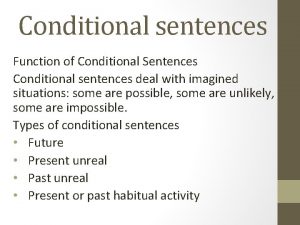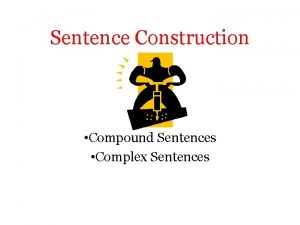Q How many types of sentences are there


























































- Slides: 58


Q: How many types of sentences are there, depending on propositional meaning?

IN TERMS OF PROPOSITION, THERE ARE FIVE KINDS OF SENTENCES:

ANALYTIC SENTENCES SYNTHETIC SENTENCES CONTRADICTION ENTAILMENT PARAPHRASE

An analytic sentence is a sentence the propositional content of which is necessarily true because of the meanings of the words used in that sentence.

EXAMPLES OF ANALYTIC SENTENCES: Frozen water is ice. Bachelors are unmarried men. Two halves make up a whole. THE EARTH REVOLVES AROUND THE SUN.


EXAMPLES OF SYNTHETIC SENTENCES: Children wear hats. The table in the kitchen is round. My computer is on.


• A CONTRADICTION IS THE OPPOSITE OF AN ANALYTIC SENTENCE

MORE EXAMPLES ON CONTRADICTION: JOHN IS A BACHELOR. JOHN IS MARRIED. TOM IS A MIDDLE – AGED AMERICAN MAN. TOM IS A CHILD.


ENTAIMENT IS A PROPERTY OF PROPOSITIONS. IF THE TRUTH OF PROPOSITION B FOLLOWS NECESSARILY FROM THE TRUTH OF PROPOSITION A, WE SAY THAT PROPOSITION A ENTAILS PROPOSITION B

EXAMPLES OF ENTAILMENT: ALAN LIVES IN TORONTO. ALAN LIVES IN CANADA. MARY LOVES ROSES. MARY LOVES FLOWERS. THE PRESIDENT WAS ASSASSINATED. THE PRESIDENT IS DEAD. I WILL TURN 28 THIS YEAR. I AM CURRENTLY LIVING. JOHN OWNS A BLUE SWEATER. JOHN OWNS A SWEATER. JOHN OWNS SOMETHING. LOBO IS A DOG. LOBO IS AN ANIMAL.

HOW MANY TYPES OF ENTAILMENT ARE THERE?

THERE ARE TWO TYPES: UNILATERAL It’s a dog unilaterally entails It’s an animal

OTHER EXAMPLES OF UNILATERAL ENTAILMENT: HE IS FROM INDIA. HE IS FROM ASIA. MARY KILLED BARBARA DIED.

BILATERAL JOHN IS BILL’S FATHER BILATERALLY ENTAILS BILL IS JOHN’S SON. JOHN IS RICHER THAN JAMES IS POORER THAN JOHN. THIS PLACE IS DIFFERENT FROM THAT PLACE IS DIFFERENT FROM THIS PLACE.


A SENTENCE WHICH EXPRESSES THE SAME PROPOSITION AS ANOTHER SENTENCE IS KNOWN AS THE PARAPHRASE OF THAT SENTENCE

EXAMPLES OF PARAPHRASE: JOHN WROTE A LETTER TO MARY. JOHN WROTE MARY A LETTER. A DOG BIT TOM WAS BITTEN BY A DOG. HE HAS FIVE KIDS. HE HAS FIVE CHILDREN. THIS CAR IS TOO SMALL. THIS CAR IS NOT BIG ENOUGH. THIS NEEDLE IS TOO SHORT. THIS NEEDLE IS NOT LONG ENOUGH.

BILATERAL ENTAILMENT= PARAPHRASE


Q: WHY IS IT ESSENTIAL TO UNDERSTAND BOTH SENSE AND REFERENCE? THE UNDERSTANDING OF BOTH SENSE AND REFERENCE IS ESSENTIAL TO A PROPER UNDERSTANDING OF THE MEANING OF MEANING

Q: ARE THE TWO TERMS USED INTERCHANGEABLY? IN NON-TECHNICAL LANGUAGE, THE TWO ARE SOMETIMES USED INTERCHANGEABLY BUT THE DIFFERENCE BETWEEN THE TWO IS CONSIDERED CRUCIAL IN SEMANTICS

tells us about the relationship between language and the outside world. The phrase (Eiffel Tower) refers to a tower in Paris. The word (lion) refers to all those large, strong, flesh-eating animals found in Asia and Africa which are known as lions. The referent of a word is the person, place or thing for which that word is used.

a speaker indicates which things in the world (including persons) are being talked about.




Q: DOES REFERENCE SIGNIFY PROPER NOUNS ONLY? NOT ONLY PROPER NOUNS, BUT ALSO COUNTABLE NOUNS

Q: WHAT IS THE REFERENT OF THE WORD (CROCODILE)? ALL THE CROCODILES IN THE WORLD

tells us about relationships inside language, i. e. , relationships between words, phrases and sentences in a language. Words like (and / or / if / therefore / because / perhaps / almost) do not refer to any person, place or thing in the outside world. They have sense but no reference.



Morning star, most commonly used as a name for the planet Venus when it appears in the east before sunrise EVENING STAR: The planet Venus when it appears in the west (evening sky), after sunset

1. BOTH EXPRESSIONS REFER TO THE SAME THING: THE PLANET VENUS. 2. THEY DENOTE A SINGLE OBJECT. 3. THEY HAVE THE SAME REFERENCE. 4. THEY HAVE DIFFERENT SENSES.


EVERY WORD THAT HAS MEANING HAS SENSE, BUT NOT EVERY WORD HAS REFERENCE

Q: WHEN LOOKING UP THE MEANING OF A WORD IN A DICTIONARY, WHAT WOULD YOU FIND THERE: ITS REFERENT, OR ITS SENSE?

THE DICTIONARY IS CONCERNED WITH SENSE RELATIONS

Q: DOES (IF) HAVE SENSE IN THE SAME WAY THAT (DOG) HAS SENSE? NO, (IF) HAS SENSE BUT NO REFERENCE, WHILE (DOG) HAS BOTH SENSE AND REFERENCE

Q: DO THE EXPRESSIONS (BIG) AND (LARGE) HAVE THE SAME SENSE IN THESE SENTENCES? I LIVE IN A BIG HOUSE. I LIVE IN A LARGE HOUSE. YES, THEY HAVE THE SAME SENSE




The denotation of a word is the object or objects that it refers to in the world outside language. The denotation of the word (elephant) is the actual elephants all over the world.

The connotation of a word is the incidental meaning that we associate with a word from time to time. Some of the connotations of the word (woman) are: tender, sensitive, sentimental, kind, patient, likely to shed tears

Connotation is the emotional and imaginative association surrounding a word. Denotation is the strict dictionary meaning of a word.



Q: HOW CAN WE SUMMARIZE THE DIFFERENCES BETWEEN DENOTATION AND CONNOTATION?

1. Denotation usually remains more or less the same, while connotation changes with the passage of time. 2. Connotation in many cases changes from one culture to another.

3. Connotation in many cases changes from one individual to another. 4. Connotation of a word is unstable, and compared to its denotation, it is peripheral to its meaning.

Q: WHAT IS THE DENOTATION OF THE WORD (ELEPHANT)?

An elephant is an enormous, four-footed animal with big ears and a long trunk.

Q: WHAT IS THE CONNOTATION OF THE WORD (ELEPHANT)? LEADERSHIP, STRENGTH, POWER, WISDOM, ETERNITY, UNNECESSARY BURDEN

 Antigentest åre
Antigentest åre Three main types of sentences
Three main types of sentences How many types of sentences are there
How many types of sentences are there Direct and indirect structure
Direct and indirect structure Potential energy and work
Potential energy and work The different types of love
The different types of love How many types of engineering are there
How many types of engineering are there How many types of formal letter
How many types of formal letter How many types of taxes are there
How many types of taxes are there How many types of motion are there in mechanical devices
How many types of motion are there in mechanical devices Speech of courtesy examples
Speech of courtesy examples How many types of credit are there?
How many types of credit are there? There are many different kinds of sports
There are many different kinds of sports How many types of lines are there
How many types of lines are there Zabo cultivation definition
Zabo cultivation definition How many major climate types are there worldwide brainpop
How many major climate types are there worldwide brainpop Curve is symmetrical
Curve is symmetrical How many types of brick buttons are there?
How many types of brick buttons are there? Steady state error formula
Steady state error formula Shadow box window display
Shadow box window display How many types of number are there
How many types of number are there How many types of feedback are there
How many types of feedback are there How many types of businesses
How many types of businesses How many different types of bread are there
How many different types of bread are there What are the types of serial killers
What are the types of serial killers How many types of numbers are there
How many types of numbers are there Is hips a thermosetting plastic
Is hips a thermosetting plastic Motivation types
Motivation types Yellowstone national park is mainly located in wyoming
Yellowstone national park is mainly located in wyoming How many types of sentences
How many types of sentences There is there are ejemplos
There is there are ejemplos There is there are part of speech
There is there are part of speech There is there are negative form
There is there are negative form Countable and uncountable there is there are
Countable and uncountable there is there are No, there aren’t.
No, there aren’t. There is there are
There is there are Eight dollars is the price of a movie these days
Eight dollars is the price of a movie these days Here there over there
Here there over there Some any a an
Some any a an Contables e incontables
Contables e incontables There is and there
There is and there There was there were ile ilgili cümleler
There was there were ile ilgili cümleler Negetive sentences
Negetive sentences There is there are
There is there are There
There There's and there are
There's and there are If there is no struggle there is no progress explanation
If there is no struggle there is no progress explanation Why were there so many witch hunts 1645-47
Why were there so many witch hunts 1645-47 Secondary consumer
Secondary consumer How many comsae are there
How many comsae are there West region vegetation
West region vegetation How many colours are there
How many colours are there How many different rocks are there
How many different rocks are there Derivatives of brown sauce
Derivatives of brown sauce The outer core is made up of
The outer core is made up of Sins against the holy spirit
Sins against the holy spirit Serial port 8051
Serial port 8051 There are many kinds of sport
There are many kinds of sport How many continents are there
How many continents are there


